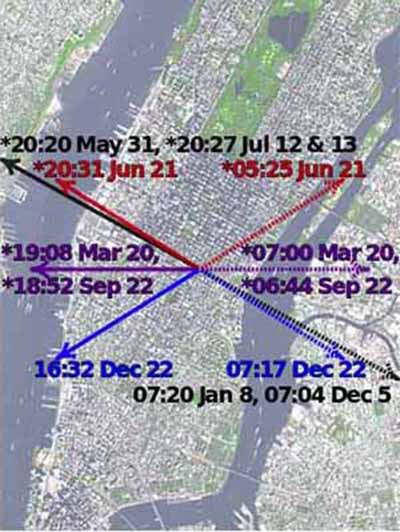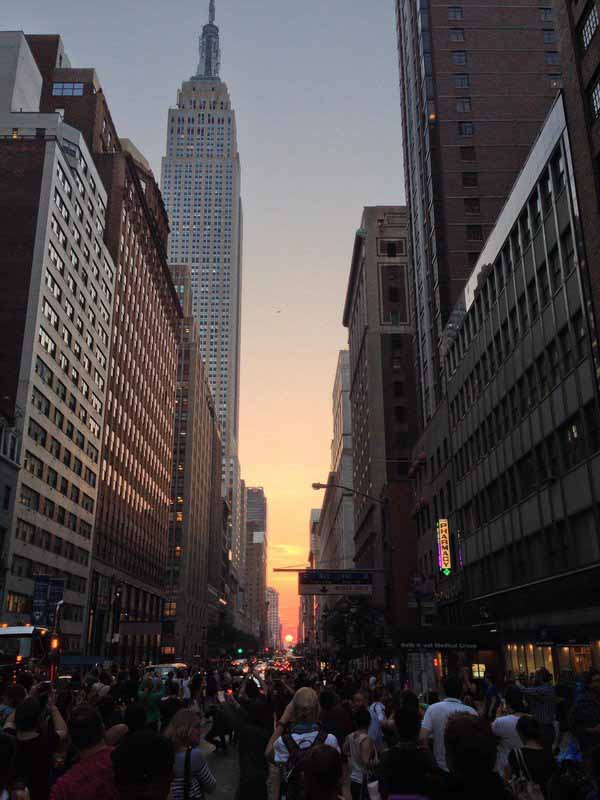Manhattanhenge

From the beginning, humans marked the seasons with megalithic monuments which guided their annual journey through time. Today we find remnants of those astronomical observatories as clues to ancient civilizations ... allowing us to wonder who guided their original design. In 2013, we continue to build stone monuments above, below, and on the surface of the planet as if codes written in time. Sometimes those buildings get destroyed as a reminder that life is about ongoing change and nothing is meant to last forever.
Manhattanhenge occurs twice a year, when the setting sun aligns with the east-west streets of the main street grid in Manhattan. The name is derived from Stonehenge when the sun aligns with the stones on the solstices. During Manhattanhenge, an observer on one of the gridded east-west streets will see the sun setting over New Jersey directly opposite, from the street, along its centerline. The dates of Manhattanhenge usually occur around May 28 and July 12 or July 13 - spaced evenly around the summer solstice. As with the solstices and equinoxes, the dates vary somewhat from year to year.

Manhattanhenge
MSNBC - May 30, 2013New Yorkers were wowed on Wednesday by a sunset that was perfectly framed by skyscrapers, thanks to an urban astronomical phenomenon known as Manhattanhenge. The same planetary tilt that determines the seasons also dictates exactly where the sun will go down each evening - and because of the way that Manhattan's dominant street grid is laid out, killer sunsets are potentially visible from some of the borough's best-known east-west streets in late May and mid-July.